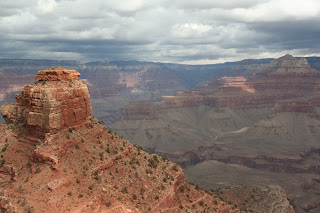The View from High Pass in the Sawtooth Mountains, ID
Wilderness Volunteers has a long association with the Sawtooth Wilderness in central Idaho, and volunteer leader and board member Gayle Marechal has led a trip there every year since 2003. This August, Gayle - who I might add makes the best blueberry pancakes you will ever eat in the backcountry - and his wife Bunny led a group of volunteers on a service project on the west side of the Sawtooths. As always, the trip was an adventure. Here's their report:
"The
Anyone who has ever been on a trip with pack animals (in this case, mules) knows that "packing" the animals is a slow and meticulous process. After moving all the communal gear and food near to where the stock was tethered so that our two Forest Service leaders, Deb and Kent, could begin packing, we began our eight-mile hike into the Sawtooths. As soon as the sun was up, we knew it was going to be a hot day - and a hot week. The hike to camp required several creek crossings and a gradual ascent of approximately 2,200 feet. We camped in some dense forest by a meadow where the stock could graze and near a creek where we could collect water and refresh ourselves after a hard - and hot - day of work.
Walking to Work
Our work project involved widening and leveling a long stretch of steep switchbacks on both sides of

Brown’s
After enjoying our free day, we awoke Thursday with renewed energy and enthusiasm which enabled us to widen and level several long switchbacks, despite all the roots and large rocks that seemed to pop up in all the wrong places! We persevered and, by the end of our third work day, had transformed a potentially unsafe trail into a trail that can be traveled easily by hikers and folks on horseback. Deb mentioned that our work probably would last ten years.
Rock Removal
While we worked, the weather changed dramatically. We watched as storm clouds moved rapidly through the mountains, bringing high winds and cooler temperatures. The hot weather was coming to an end. By the time we returned to camp, the temperature had dropped considerably, the rain had begun falling, and we were happy that we had hung a large tarp on the day we first arrived in camp. Everyone put on an extra layer, gathered under the tarp, and watched the storm clouds move across the sky while Gayle and Bunny prepared dinner. The next morning there was snow on the upper ridges, and the clouds hung low over the meadow. We delayed climbing

Stormy Skies
By morning the rain had stopped, but its damage had already been done as everyone hiked out with packs burdened by the load of wet tents. The cloudy, cooler weather made for a pleasant and leisurely hike to the trailhead where we said our goodbyes and went our separate ways. Next year, WV will be back on the more popular east side of the Sawtooths. I’ll miss the solitude of the west side, but I sure won’t miss that bumpy ride on those gravel roads, and none of us will miss that marauding deer who roamed through the camp that night chewing anything that had a bit of salt on it!"











 We worked for two days on the Heritage-Loon Lake portage, and then moved to East Loon Lake were we had the best campsite in the BWCAW (IMO) -- a sand beach, a world-class view to the north across this large lake, and plenty of room to spread out. Previous tenants had left some impressive "flintsone furniture" in front of the large firepit, and there were lots of trees to hang tarps and drying lines.
We worked for two days on the Heritage-Loon Lake portage, and then moved to East Loon Lake were we had the best campsite in the BWCAW (IMO) -- a sand beach, a world-class view to the north across this large lake, and plenty of room to spread out. Previous tenants had left some impressive "flintsone furniture" in front of the large firepit, and there were lots of trees to hang tarps and drying lines.








